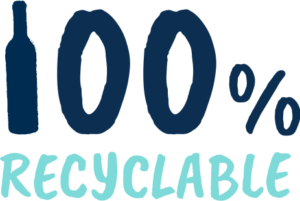
Supporting quality glass recovery
Grants and FundingWe work with organisations to improve outcomes for glass across New Zealand. That can include increasing the volume and quality of glass recovered for recycling or supporting reuse/refillables. Sometimes the required solutions need new infrastructure, equipment or funding for research.
Since its establishment in 2006, levies paid by GPF member companies have granted applications of more than $3.7 million, and each year we approve further funding. Do you have a project that will see more glass recycled or reused?
We’d love to help.
What’s the purpose?
The Forum specifically targets projects which keep glass out of landfill. Typically they aim to:
1. increase the volume of container glass recovered; and/or
2. improve the quality of recovered container glass to maximise recyclability; or
3. keep glass containers in circulation for longer through reuse/refill
The Forum prioritises projects which enable glass bottles and jars to be returned to be recycled or reused. However projects which support alternative local uses for glass that is unsuitable for recycling will also be considered.
What’s covered?
The Forum considers applications for projects that meet its aims for zero glass to landfill, and include infrastructure, plant and equipment, technology, research and events.
These projects can either help maintain existing recovery rates, result in new recovery volumes or keep glass in circulation through reuse. They need to have a specified scope, timeframe, expected outcome and a financial contribution from the applicant (though exceptions may apply). A Health and Safety plan and Business Plan (for applications over $5,000) are a must. Expansion of existing activities will be considered, but applications for ongoing financial support of existing activities will not be considered.
How do I apply?
There are two funding rounds each year in May and October.
Applications open on the first day of the month and close on the last day of the month. You can apply online or download a PDF form to complete offline. If you have any questions, please get in touch.
Here are some examples of this funding having a positive impact.
Grants awarded after 1 April 2017. For information about grants awarded prior to this please contact GPF Scheme Managers.
Ben Ohau Golf Club
What:
Glass recycling bins
Where:
Alexandra
Why:
The Ben Ohau Golf Club wanted to reduce glass, which makes up two-thirds of waste going to landfill in summer, from going to landfill.
Impact:
A $4,784 grant allowed the club to buy and install seven glass recycling bins and five general rubbish bins around the course and clubhouse.
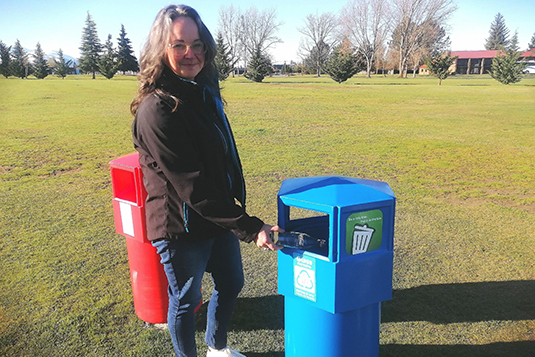
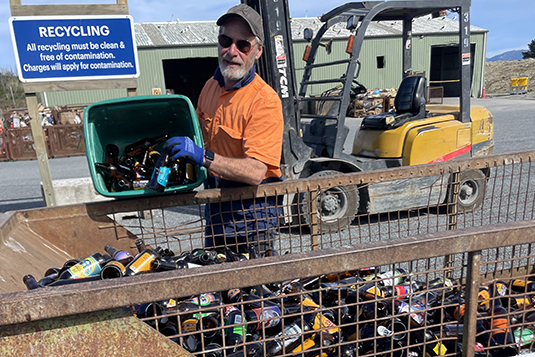
Innovative Waste Kaikoura
What:
Glass storage bunkers
Where:
Kaikoura
Why:
Innovative Waste needed to expand their glass storage to make freight viable.
Impact:
A $20,000 grant helped make bulk storage and transport of colour-sorted glass possible, from Kaikoura to 5R Solutions in Christchurch. From there is is bulk shipped to Auckland for recycling.
Again Again
What:
Design of reusable beer flagon system for New Zealand
Where:
Based in Bay of Plenty
Why:
Again Again is designing software which enables and manages the circular movement of a reusable container asset pool.
Impact:
A $25,000 grant, alongside funding from the Government and Garage Project, meant the work could move forward.
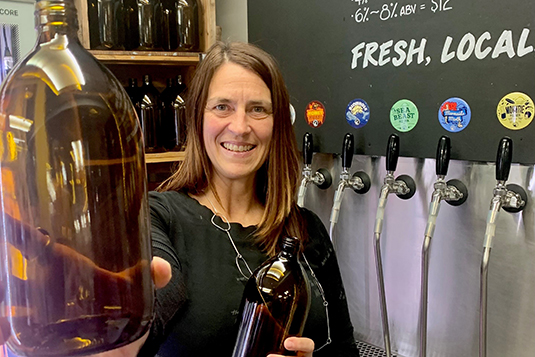
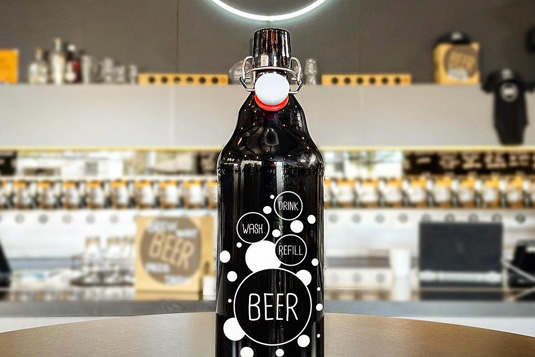
The Beer Spot
What:
Design of beer refill bottle and prototype bottle filler
Where:
Auckland
Why:
The Beer Spot wanted to swap from refillable PET bottles to glass containers at their five Auckland sites. This required the design of a new bottle and filler.
Impact:
A $29,000 grant helped with the project by enabling the design of the bottles and the roll out of the prototype bottle filler.
Xtreme Zero Waste
What:
Glass handling equipment
Where:
Raglan
Why:
Xtreme Zero Waste developed a Centre of Excellence modelling zero waste sector best practice infrastructure and innovation and wanted to emulate this in the glass recycling portion of the centre.
Impact:
A $25,000 grant helped purchase equipment which reduces manual handling and ensure best practice for high-quality colour sorting of glass is possible.
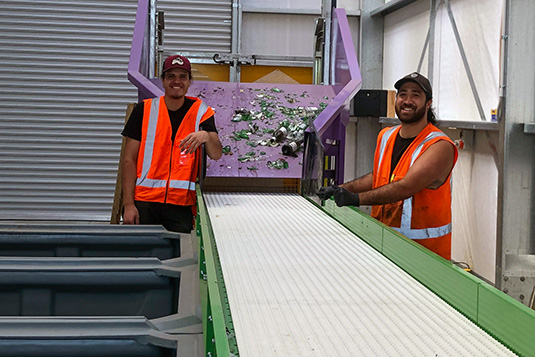
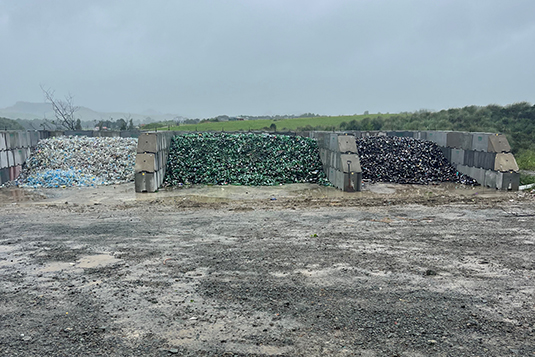
Northland Waste
What:
Glass storage bunkers
Where:
Russell
Why:
Council contractor Northland Waste needed to upgrade the glass storage system as part of a project to convert the Russel Transfer Station and Landfill to a modern resource recovery park. Limited space also meant previously glass had to be crushed, which increased the risk of loads being rejected by the recycler.
Impact:
A $35,000 grant helped Northland Waste build new bunkers, increasing storage space and improving health and safety.
Waikato District Council
What:
Glass storage bunkers
Where:
Huntly
Why:
The council constructed a new, fit-for-purpose recycling sorting centre, which included glass recycling. The council requested funding for the glass storage portion of the project.
Impact:
The new, undercover centre now has a dedicated glass handling and storage section where colour-sorted glass is secure, out of the weather and separate to other recyclables.
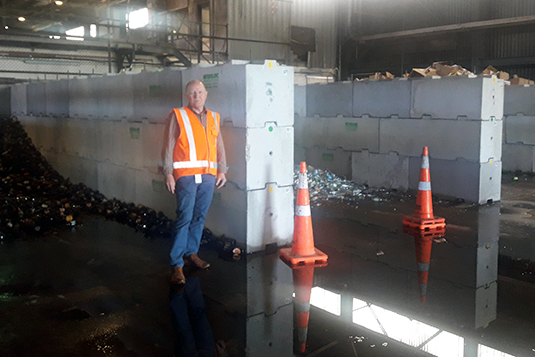
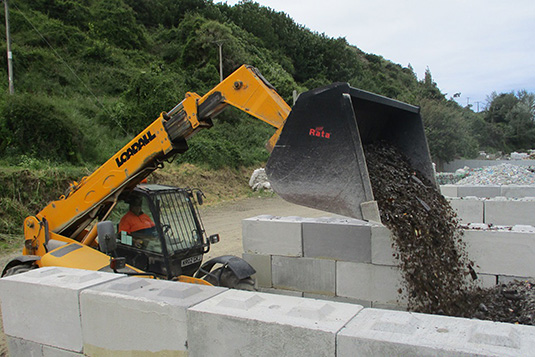
Waitaki Resource Recovery Trust
What:
Glass storage bunkers
Where:
Oamaru
Why:
Rising freight costs had made transport of colour-sorted glass direct to Auckland unviable for the Trust. An arrangement was made to ship via 5R Solution’s glass aggregation hub in Christchurch, but this required more storage space to make bulk transport via trucks possible.
Impact:
The Trust processes 600 tonnes of high quality glass annually, with this grant helping ensure this glass goes to Auckland to be recycled.
EcoCentral
What:
Glass separate collection bins
Where:
Christchurch
Why:
EcoCentral wanted to trial collecting colour-separated glass at its Parkhouse transfer station to determine the viability, and sustainability of collecting colour-sorted glass for processing back into glass containers in Auckland.
Impact:
If successful, the collections will be expanded to all three of EcoCentral’s transfer stations, which collect between 360 and 600 tonnes of glass a year.
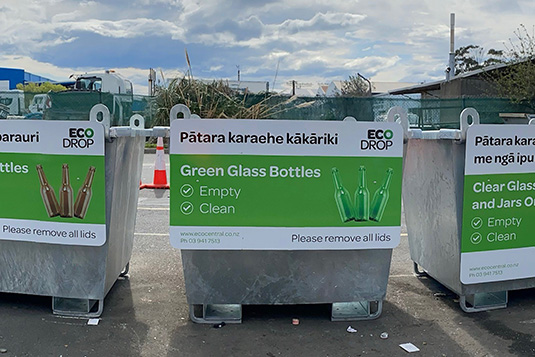
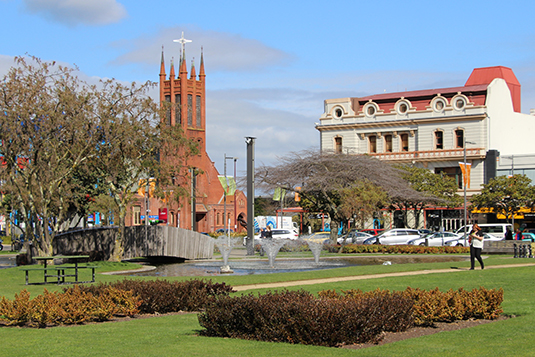
Palmerston North City Council
What:
Glass storage bunkers
Where:
Palmerston North
Why:
The council needed to upgrade its glass storage capacity in order to deal with supply chain fluctuations as well as cater to the future growth of the city.
Impact:
A grant of $8,600 helped the council construct new, purpose-built bunkers which increased storage capacity.
Ruapehu District Council
What:
Glass storage bunkers
Where:
Taumarunui
Why:
The old, wooden glass storage bunkers at the Taumarunui Transfer Station were well beyond their useful life, causing contamination issue for collected glass. This in turn resulted in glass being lost to landfill.
Impact:
A grant of $28,000 helped the council construct new, purpose-built bunkers which greatly reduce contamination and increase storage capacity.
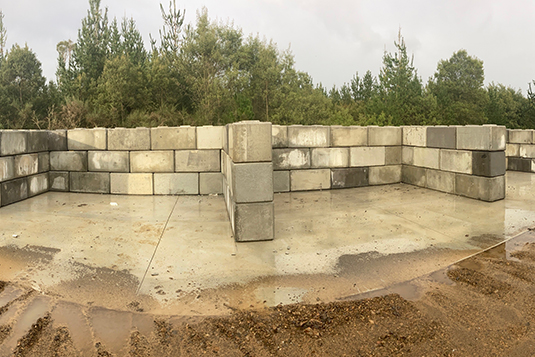
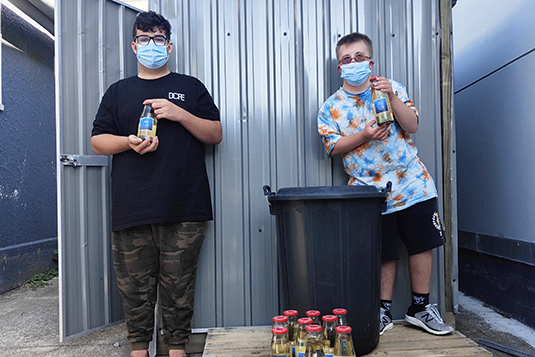
Opunake High School
What:
Shed for fertiliser bottling (reuse)
Where:
Opunake
Why:
Opunake High School students at the special needs unit set up a project making seaweed fertiliser and needed a shed to make bottling and storage easier.
Impact:
A grant of $500 meant they could buy the shed and get their project off the ground.
Manawatu District Council
What:
New storage bunkers
Where:
Feilding
Why:
Manawatu District Council built a new resource recovery and recycling centre and applied for funding for the glass storage bunkers.
Impact:
A grant of $30,000 meant the new bunkers could be constructed, making glass recycling more secure and easier for the public.
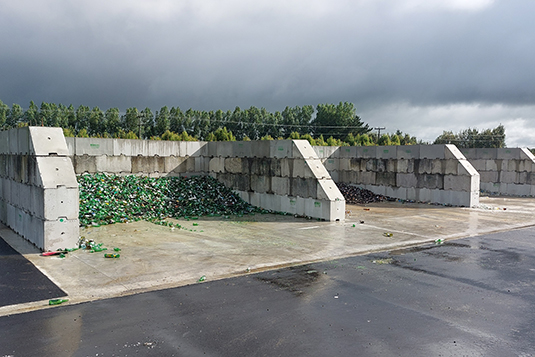
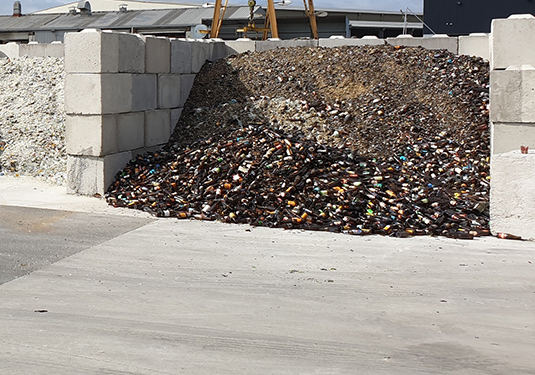
Hakaru Transfer Station
What:
Concrete pad for storage bunkers
Where:
Kaipara
Why:
The volume of glass being collected for recycling in the Kaipara district has meant the district council has had to upgrade storage facilities at the Hakaru Transfer Station.
Impact:
A grant of $18,000 meant the storage system could be upgraded to properly deal with the higher volume of glass, improving transport efficiency and reducing transport emissions.
Western Bay of Plenty District Council
What:
Glass collection service
Where:
Western Bay of Plenty
Why:
Western Bay of Plenty District Council is set to roll out a new glass separate, kerbside recycling collection on 1 July 2021. This is the first rates-funded kerbside service in the district for more than 24 years.
Impact:
A grant of $21,500 will help with the rollout of this new, best practice service which involves a weekly PAYT (pay as you throw) rubbish collection using a 140l mobile bin, fortnightly mixed recycling using a 240l mobile bin, fortnightly glass crate collection using a 45l crate, and a weekly food waste collection in the urban areas with a 23l bin.
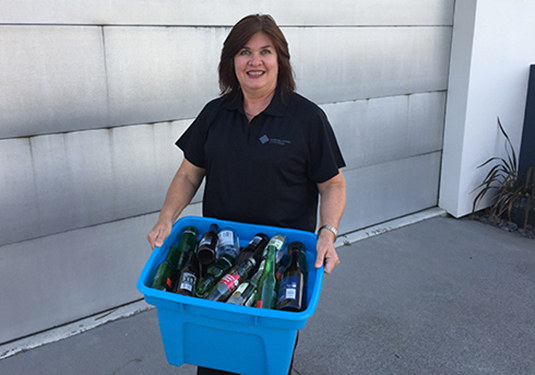
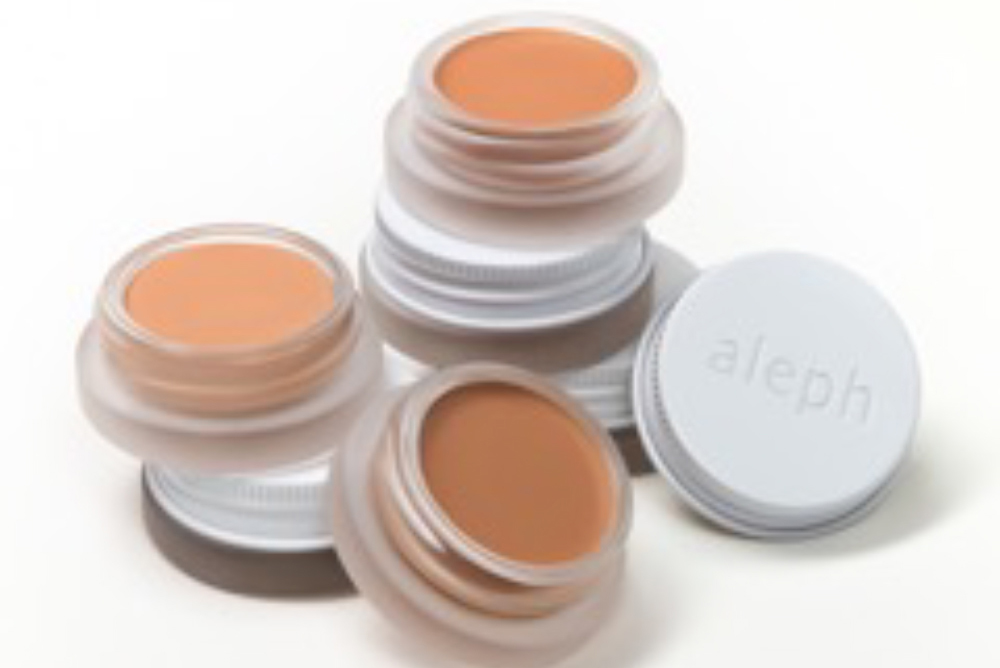
Aleph Beauty
What:
Commercial-grade dishwasher
Where:
Auckland
Why:
Sustainability-focused, NZ cosmetics company Aleph Beauty wanted to offer a return and refill option for some of the glass-packaged products. This is both in response to calls by the public and the company’s move to a circular economy approach to business.
Impact:
A $3,204 grant enabled the purchase of a commercial-grade dishwasher to trial and launch the service. This evidenced the GPF’s commitment to keeping glass out of landfill through all practical and viable methods.
Bin Hire
What:
Storage bunker upgrade
Where:
Hastings
Why:
Bin Hire have developed an innovative trolley system for glass recycling crates which makes colour-separating, storing and moving glass far easier. Initially developed for council retirement village residents, and potentially the hospitality industry. As a result the company needed to upgrade its storage bunkers as well as educate the public on the use of the trolleys.
Impact:
A grant of $17,645 helped Bin Hire upgrade its bunkers while an additional $2,000 was awarded to help promote them.
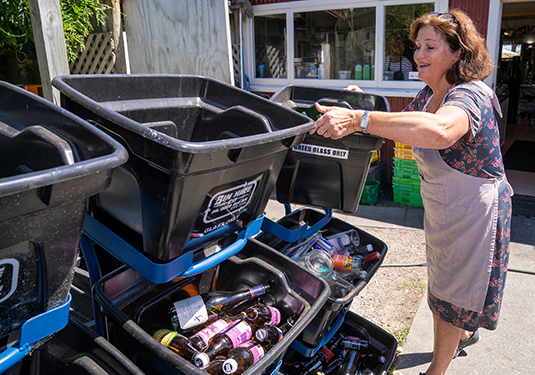
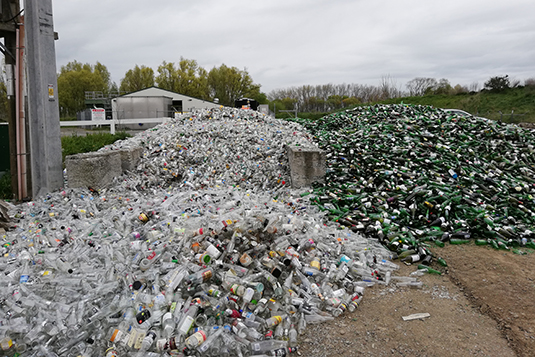
Central Hawke’s Bay District Council
What:
Storage bunker upgrade
Where:
Central Hawke’s Bay
Why:
Central Hawke’s Bay District Council has proposed expanding its kerbside recycling to five townships from 1 July 2021, as part of its Long Term Plan 2021-2031. The volume of glass being collected is already such that the current system needed to be upgraded.
Impact:
The council used a $20,000 grant from the GPF to upgrade its storage bunkers, both to cope with current glass recycling levels and the possible increase if the service is expanded.
Re:Sort Centre
What:
Storage bunker upgrade
Where:
Whangarei
Why:
Whangarei District Council’s move to a glass separate kerbside collection service resulted in a 20% increase in recycled glass at the Re:Sort Centre. This necessitated the upgrade of storage bunkers.
Impact:
A $42,000 grant meant Northland Waste, which runs the centre, could upgrade the bunkers resulting in less contamination, improved health and safety on site and the ability to deal with seasonal demands.
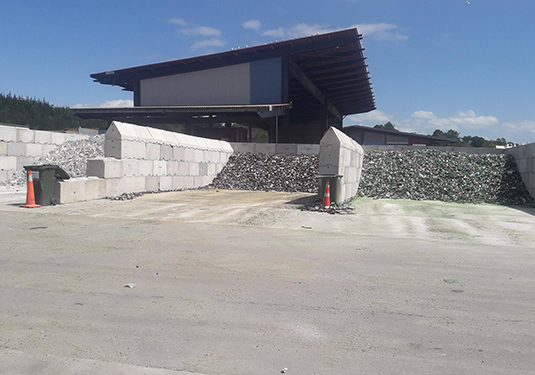
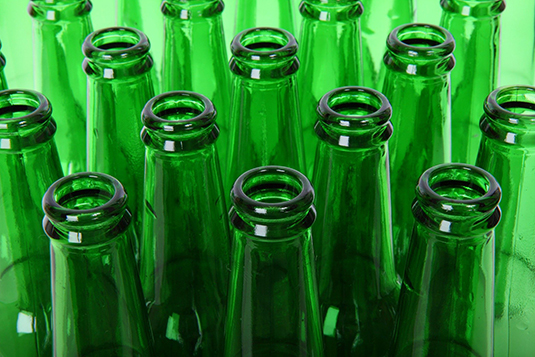
Waiheke Community Resource Recovery Park
What:
Hook bin
Where:
Waiheke Island
Why:
The Waiheke Community Resource Recovery Park sees a high volume of green glass over peak seasons and required a more efficient way of storing and transporting it.
Impact:
A $18,00 grant meant a hook bin could be purchased, improving glass recycling of green glass. The model could potentially be expanded for clear and brown glass in the future.
Kaupokonui and Districts Beach Society
What:
Glass recycling station
Where:
Kaupokonui Beach
Why:
The increasingly popular Kaupokonui Beach in Taranaki had no recycling facilities for residents and visitors, with the nearest facility 4km away.
Impact:
A $1,100 grant meant recycling station could be installed in time for summer.
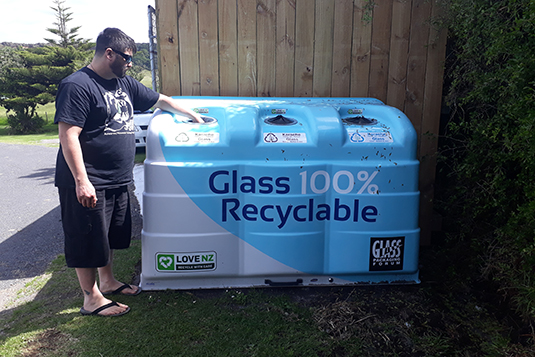
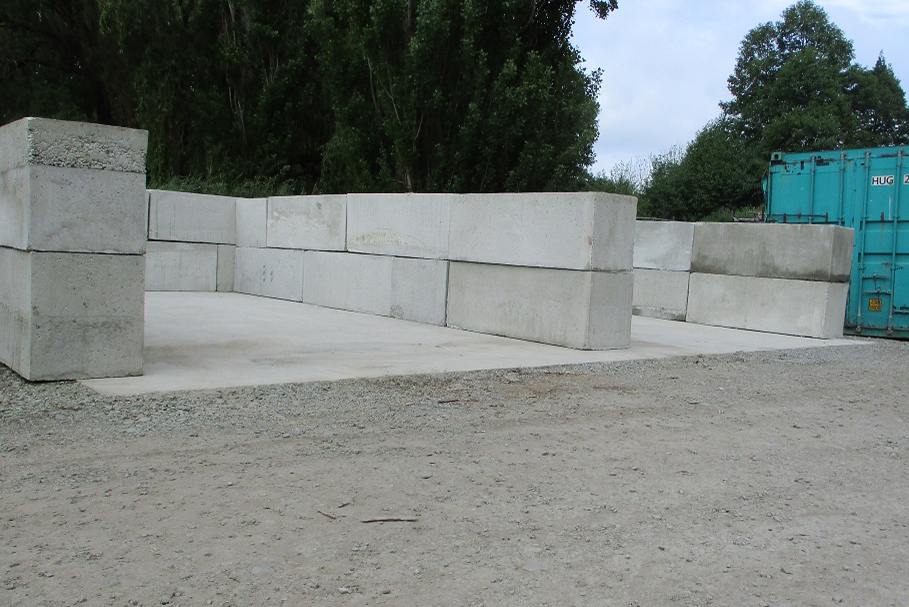
Waitaki Resource Recovery Trust
What:
Glass storage bunker upgrade
Where:
Oamaru
Why:
Increasing volumes of glass recycling at the Waitaki Resource Recovery Park mean the Waitaki Resource Recovery Trust needed to upgrade its storage capacity.
Impact:
A $18,400 grant meant new storage bunkers could be constructed, which both improved storage and health and safety at the park.
EnviroWaste Services
What:
Glass storage bunker upgrade
Where:
Hamilton
Why:
Hamilton City Council’s move to a kerbside collection service with separate glass crates has meant a substantial increase in the glass collected for recycling. As a result the contractor, EnviroWaste Services, required the construction of bigger storage bunkers.
Impact:
A $22,000 grant help enable the construction of the bunkers, which hold up to 10 times as much colour-sorted glass.
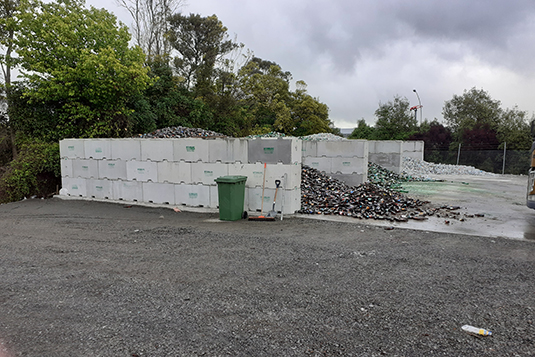
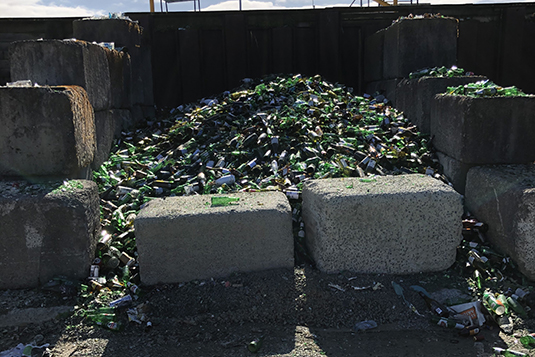
Whangarei District Council
What:
Glass storage bunker upgrade
Where:
Whangarei
Why:
Moving to the best practice method of separate glass recycling crates in Whangarei saw volume begin to exceed storage capacity. The council therefore needed to expand the Uretiti Transfer Station glass storage bunkers.
Impact:
A $4,500 grant help enable the upgrade, which prevents contamination by glass spilling over.
Kāpiti Coast District Council
What:
Public place recycling bin redesign
Where:
Kāpiti Coast
Why:
Kāpiti Coast District Council needed to redesign their trial public place recycling bin for glass so it could accept colour-sorted glass. This formed part of a larger move by recycling collectors to a system where all glass is recycled.
Impact:
A $1,000 grant enabled the bin to be redesigned. The new design would also marketed to other regions where the same bins are installed.
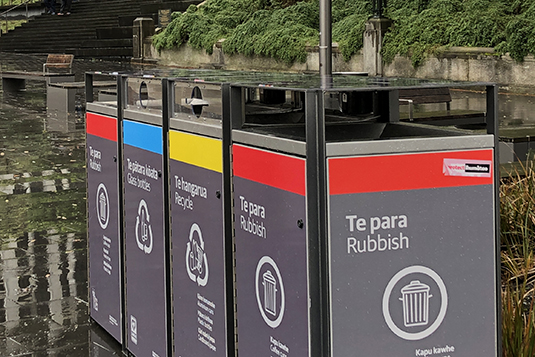
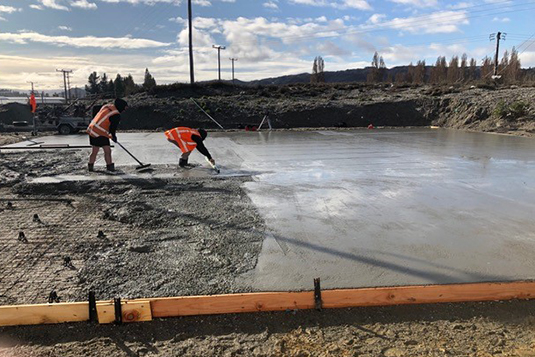
Alexandra Wastebusters
What:
Glass storage
Where:
Alexandra
Why:
The increase in glass recycling in and around Alexandra has seen the Alexandra Wastebusters operation become a hub for the area, requiring more greater capacity to store glass for transport.
Impact:
A $25,000 grant enabled the construction of a concrete pad for storage bunkers. This allows more efficient on site operation, ease of transport through to the hub at 5R Solutions in Christchurch, and reduces contamination.
Ethical Waste Services
What:
Forklift
Where:
Ohakune
Why:
Ethical Waste has taken on site management of the Waimarino Recycling Centre and found the large skip bins meant staff could not remove contamination from the glass. As a result glass was going to landfill.
Impact:
A $10,200 grant enabled the purchase of a forklift which meant smaller skips can be used, which can be cleared of contamination. It also meant they could move the public drop-off area to where there is shelter to display educational material.
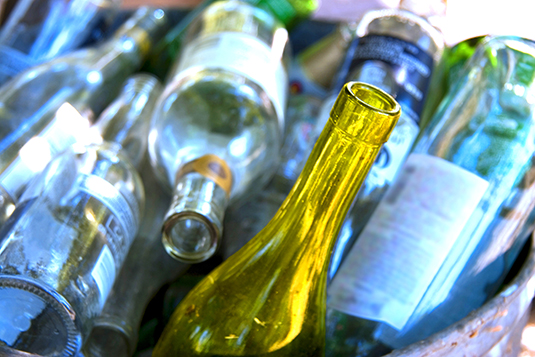
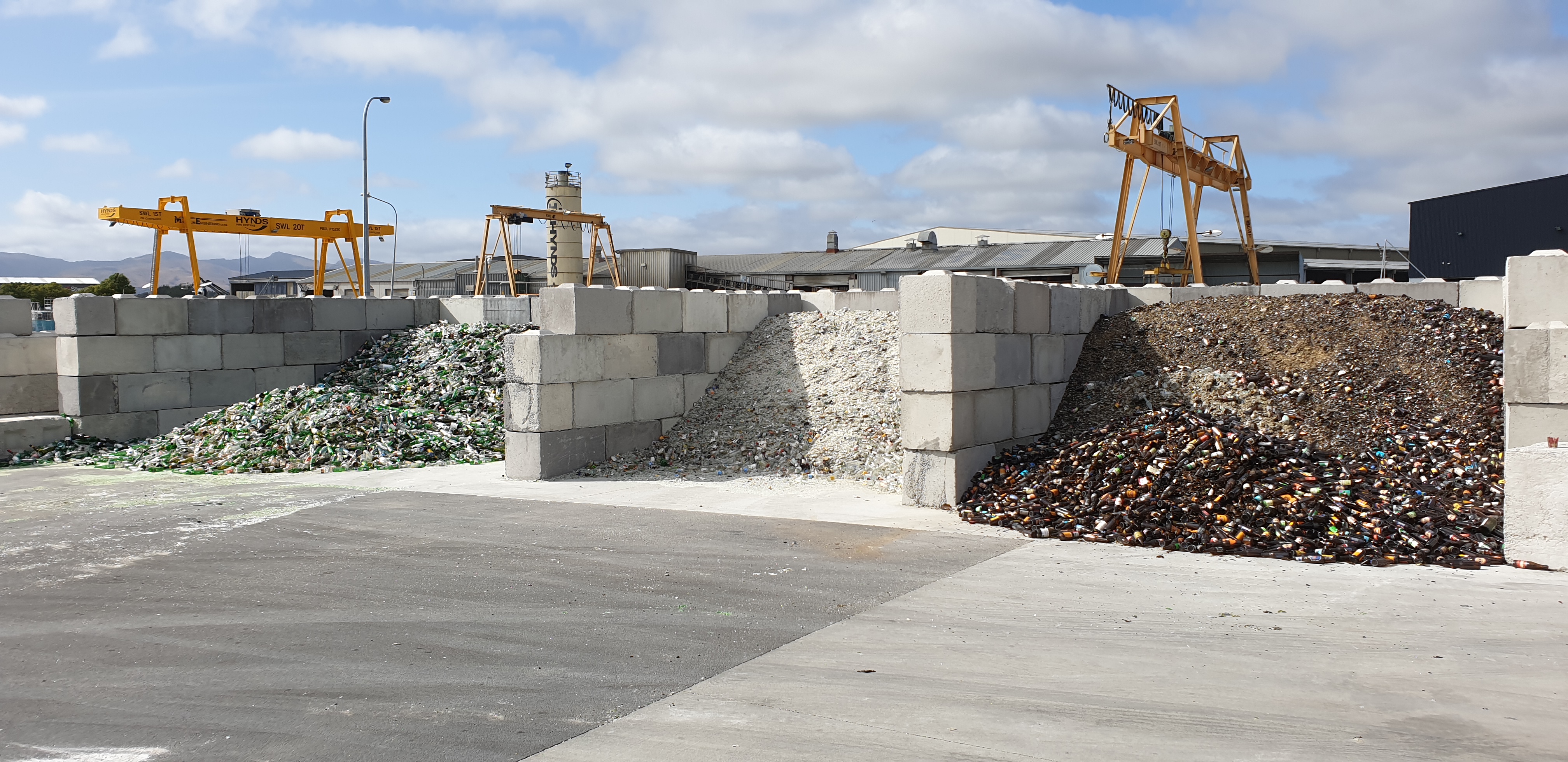
5R Solutions
What:
Glass storage bunkers
Where:
Christchurch
Why:
An increase in the volume of glass being recovered in the South Island an hubbed through 5R meant a new facility was needed. New bunkers were required to properly bulk store the colour-sorted and mixed-colour glass.
Impact:
A $11,500 grant from the GPF meant the new bunkers could be constructed, resulting in it being possible for hundreds of tonnes more glass to be recovered and get sent to the furnace in Auckland.
Wairoa District Council
What:
Glass storage bunkers
Where:
Wairoa
Why:
Insufficient storage at the Wairoa refuse transfer station was resulting in the colour-sorted glass from becoming contaminated as well as sending glass to landfill which could otherwise be recycled.
Impact:
A $25,000 grant from the GPF resulted in the construction of new concrete, glass storage bunkers which increased storage and means up to 150 tonnes more glass can be recycled each year. It also gave greater flexibility around coordinating the transport of glass to Auckland to be recycled.
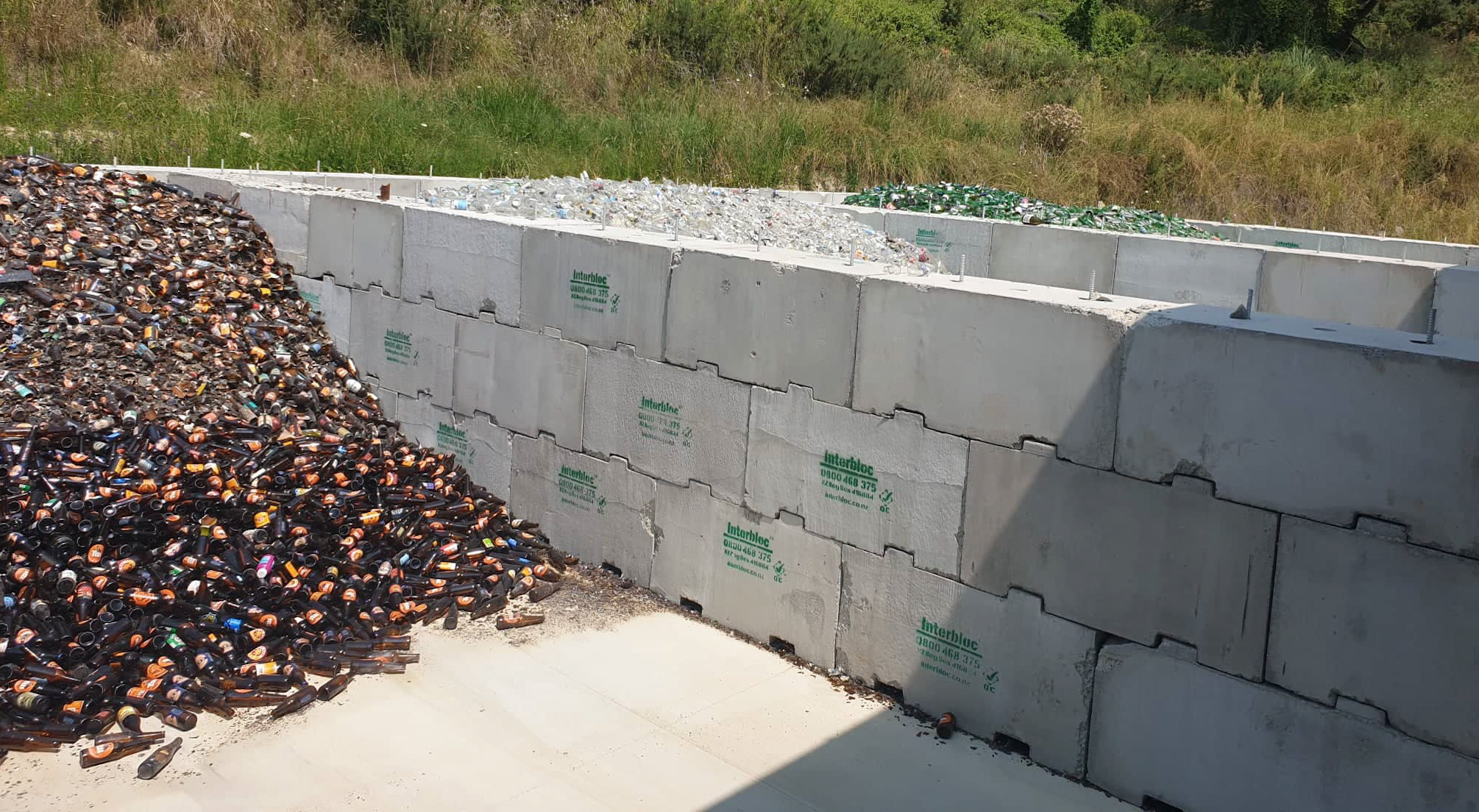

Marlborough District Council
What:
Glass storage bunkers
Where:
Blenheim
Why:
Changes to the transport system for moving glass from the Blenheim Resource Recovery Centre to Auckland had changed, resulting in the glass storage capacity being exceeded at peak periods.
Impact:
A $15,000 grant from the GPF resulted in the construction of new concrete, glass storage bunkers which increased storage by 80%. This has prevented contamination of colour-sorted glass due to be sent for recycling in Auckland.
South Waikato Achievement Trust
What:
Glass storage bunkers
Where:
Tokoroa
Why:
The South Waikato Achievement Trust, which runs the Croad Place Recycling Centre needed to upgrade its storage system to increase capacity, reduce contamination and improve health and safety.
Impact:
A $25,000 grant from the GPF resulted in the construction of four concrete, glass storage bunkers.
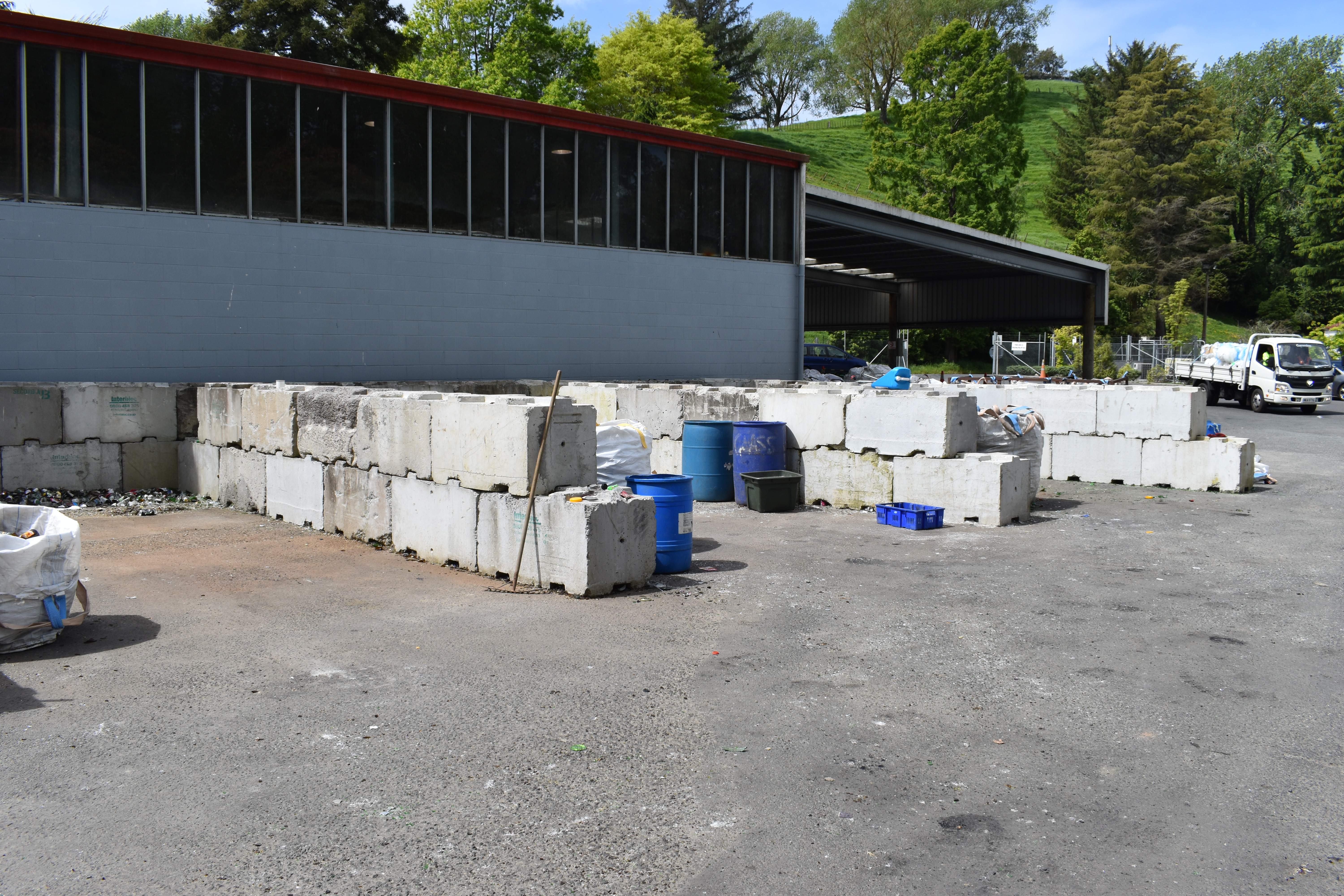
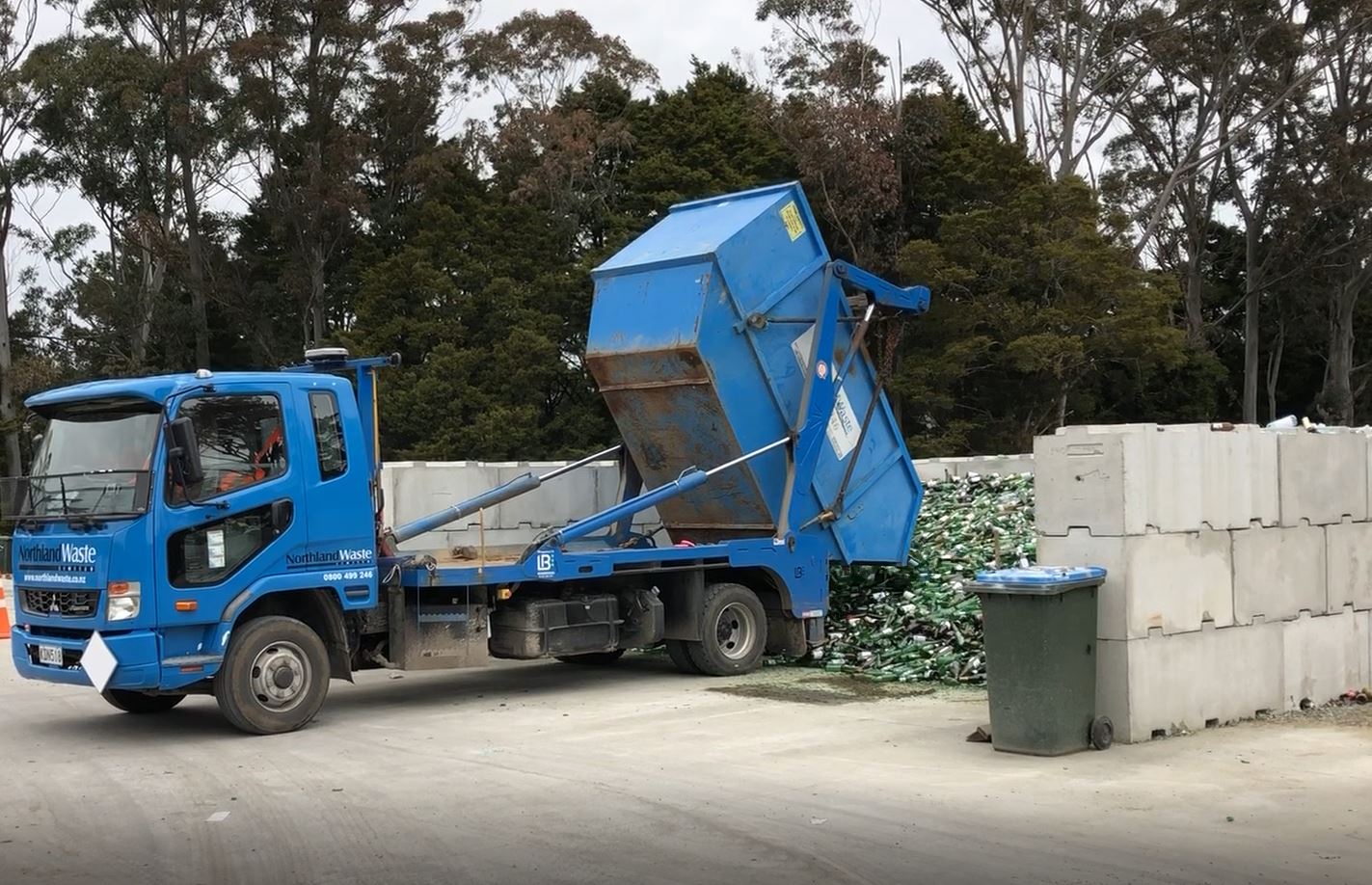
Northland Waste
What:
Glass storage bunkers
Where:
Kerikeri
Why:
The volume of glass going to the new Kerikeri Re:Sort Resource Recovery Park increased so rapidly after opening in late 2018 that park operator Northland Waste had to upgrade storage capacity.
Impact:
A $23,000 grant from the GPF helped make the upgrade possible. As a result the portable skip bins were replaced with concrete bunkers, increasing storage capacity from 5.5 to 49 tonnes, as well as improving transport efficiency.
Upper Hutt City Council
What:
Recycling drop-off station.
Where:
Upper Hutt
Why:
Upper Hutt has no rates-funded kerbside recycling, with the public drop-off recycling station becoming overwhelmed. As a result an upgrade to the station was required.
Impact:
A $10,000 grant from the GPF helped make the upgrade possible. This means the station is open 24/7, has better access and can take more material, including colour-sorted glass, to be recycled.

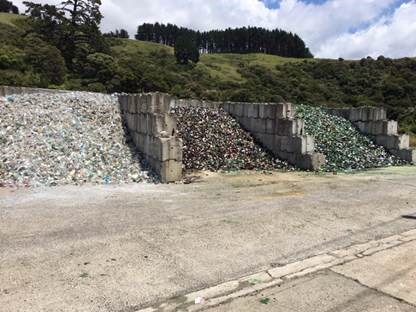
Smart Environmental
What:
Concrete bunkers.
Where:
Coromandel Peninsula
Why:
Glass storage facilities at transfer stations had been unable to deal with the influx of glass over the festive season, resulting in overflowing storage areas.
Impact:
Increased capacity ahead of the 2018/19 festive season resulted in significantly improved glass handling as well as a better experience for members of the public using the transfer station.
Marlborough District Council
What:
Recycling containers for MDC’s Rural Community Recycling programme.
Where:
Marlborough
Why:
Rural communities in Marlborough – Seddon ad Oyster Bay – have limited access to recycling facilities, resulting in recyclable material being lost to landfill.
Impact:
Providing recycling containers to these two communities means material which was being lost to landfill – approximately 18 tonnes of which is glass – can be recovered.
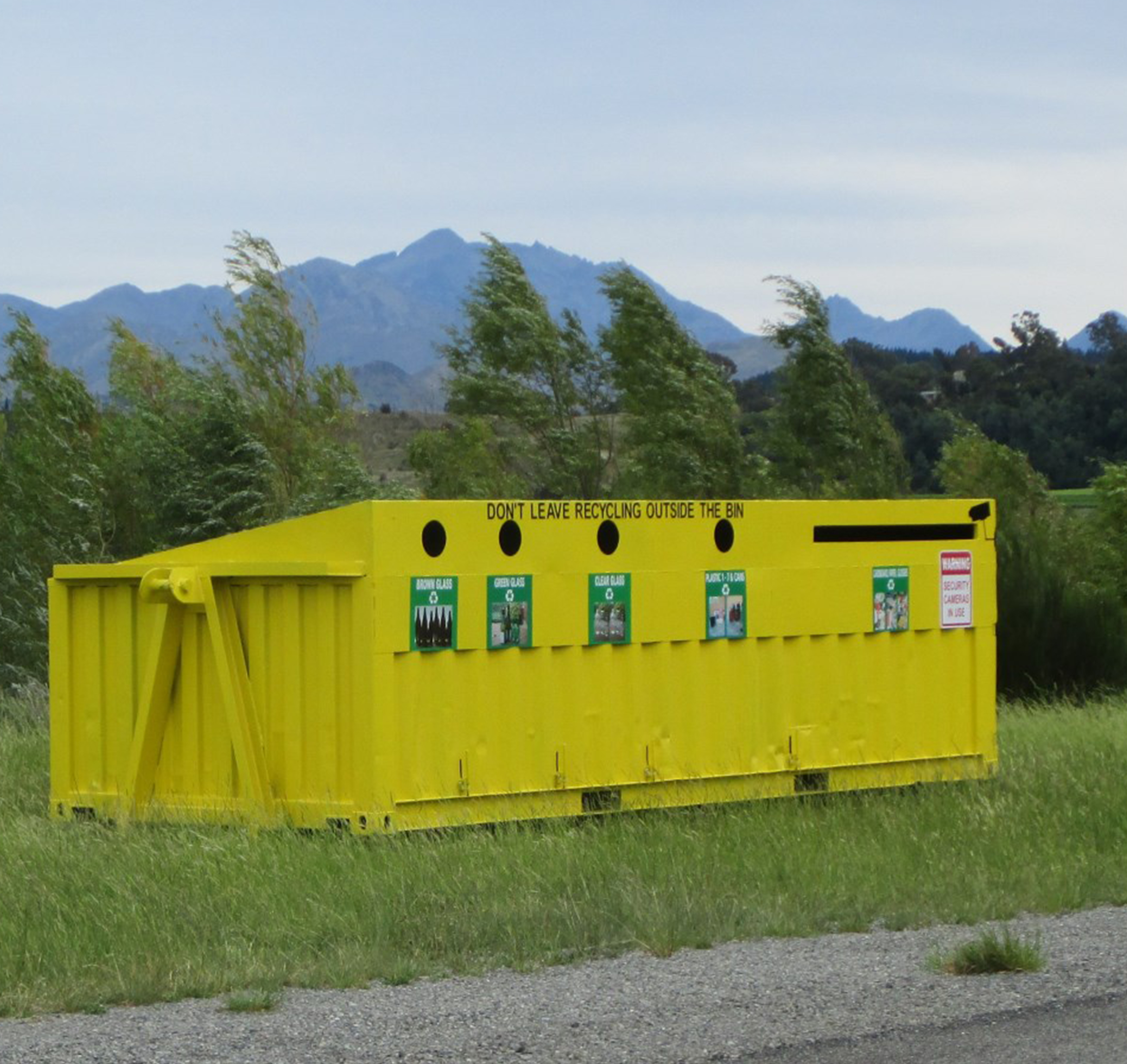

Kinloch Transfer Station
What:
Improvements to glass recycling drop off area
Where:
Taupo
Why:
The increasing population in Kinloch had resulted in the need for the Taupo District Council to upgrade the transfer station in order to deal with the upsurge in materials being handled.
Impact:
The improvements have resulted in a safe and more usable glass handling facility as glass volumes are expected to increase to 100 tonnes per year.
Devonport Community Recycling Centre
What:
Hook bin for glass storage and transport
Where:
Auckland
Why:
Global Action Plan Oceania (GAPO), which runs the Devonport Community Recycling Centre, needed to improve its glass handling system thus allowing it to offer commercial glass recycling to local cafes and restaurants.
Impact:
The bin has helped give access to glass recycling for some 18 cafes and restaurants which had previously sent glass to landfill.
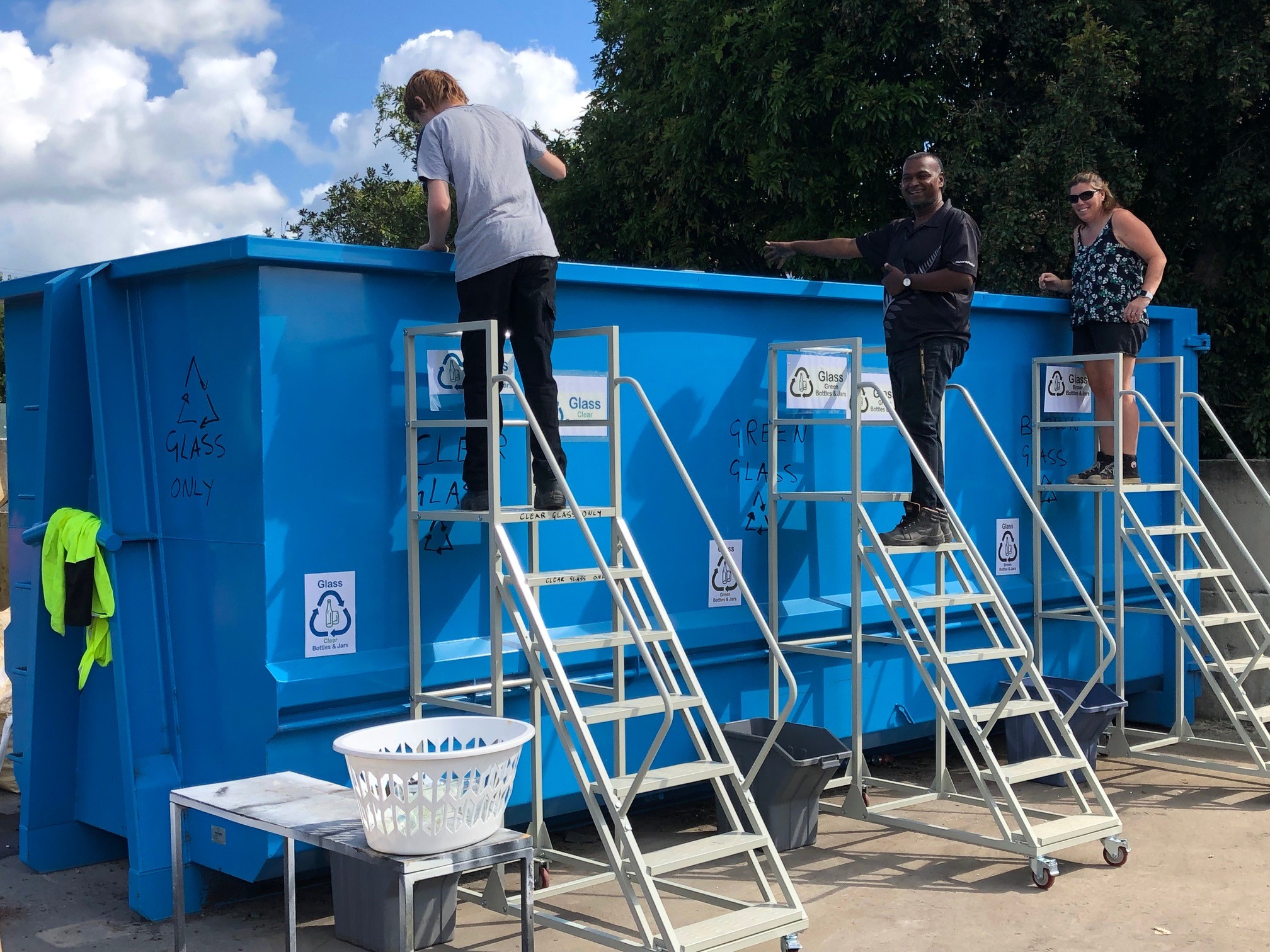
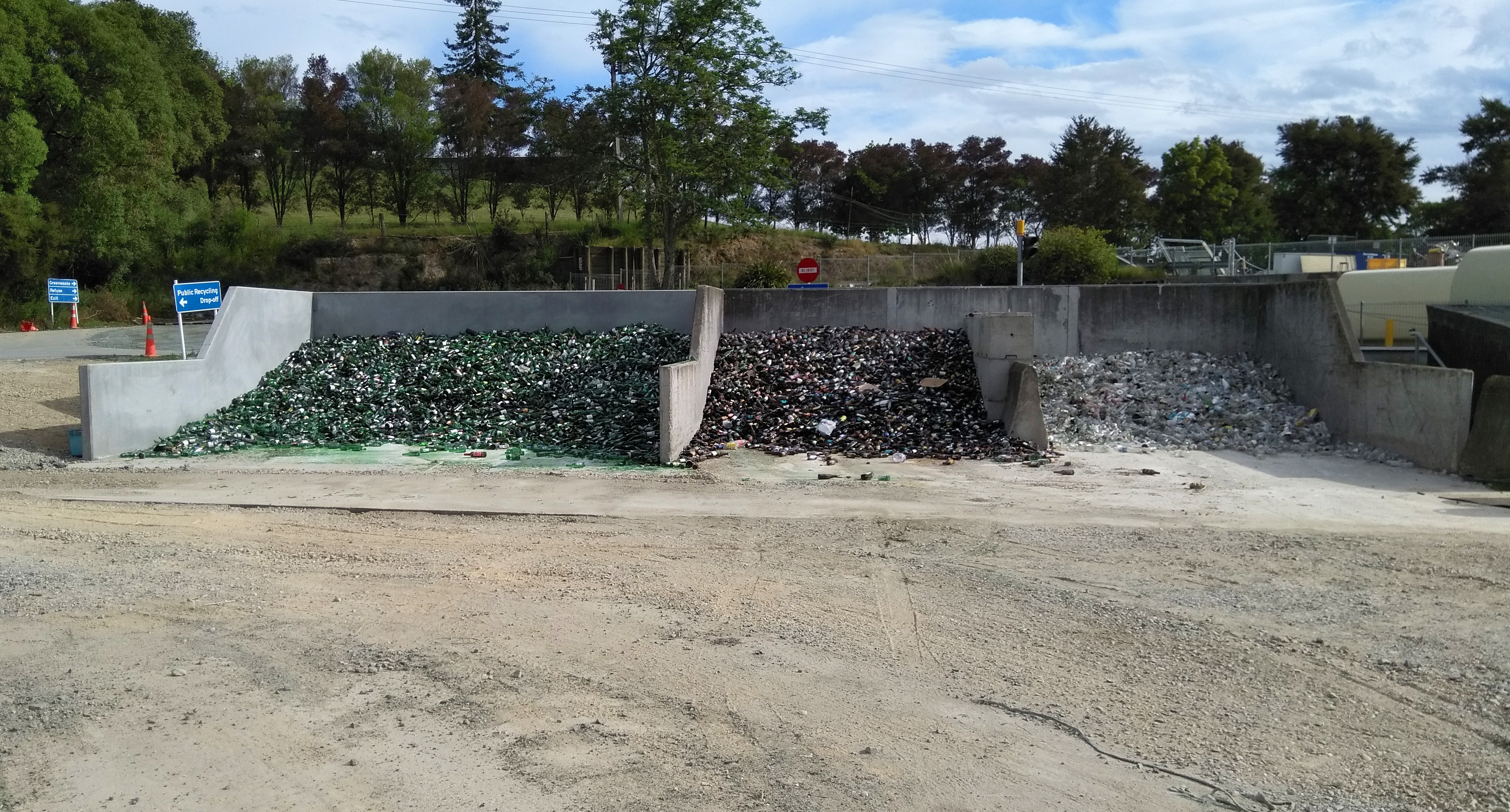
Tasman District Council
What:
Glass storage bunkers
Where:
Tasman
Why:
The Tasman District needed to increase storage capacity at the Mariri Resoruce Recovery Centre due to an increasing glass volumes in the region, particularly over summer. The GPF grant of $20,000, along with $20,000 of funding from the council, meant extra storage bunkers could be installed, increasing capacity and avoiding double handing before the glass is sent to O-I.
Impact:
The site is currently handling 388 tonnes per annum, which is expected to increase to 500TPA, to be recycled at O-I in Auckland.
Tauranga City Council
What:
Glass recycling bins
Where:
Tauranga
Why:
The Tauranga City Council wanted to introduce a new, interim, rates-funded kerbside collection for glass bottles and jars in Tauranga. This was to address the lack of a kerbside glass recycling following the decision by private waste companies to stop collecting glass at the kerbside in March 2018.
The GPF funded $165,000; a quarter of the total cost of the glass collection bins needed for the service. This was the biggest single grant awarded by the Forum.
Impact:
It is expected the service will divert over 6000 tonnes of glass from landfill to be recycled at O-I in Auckland.
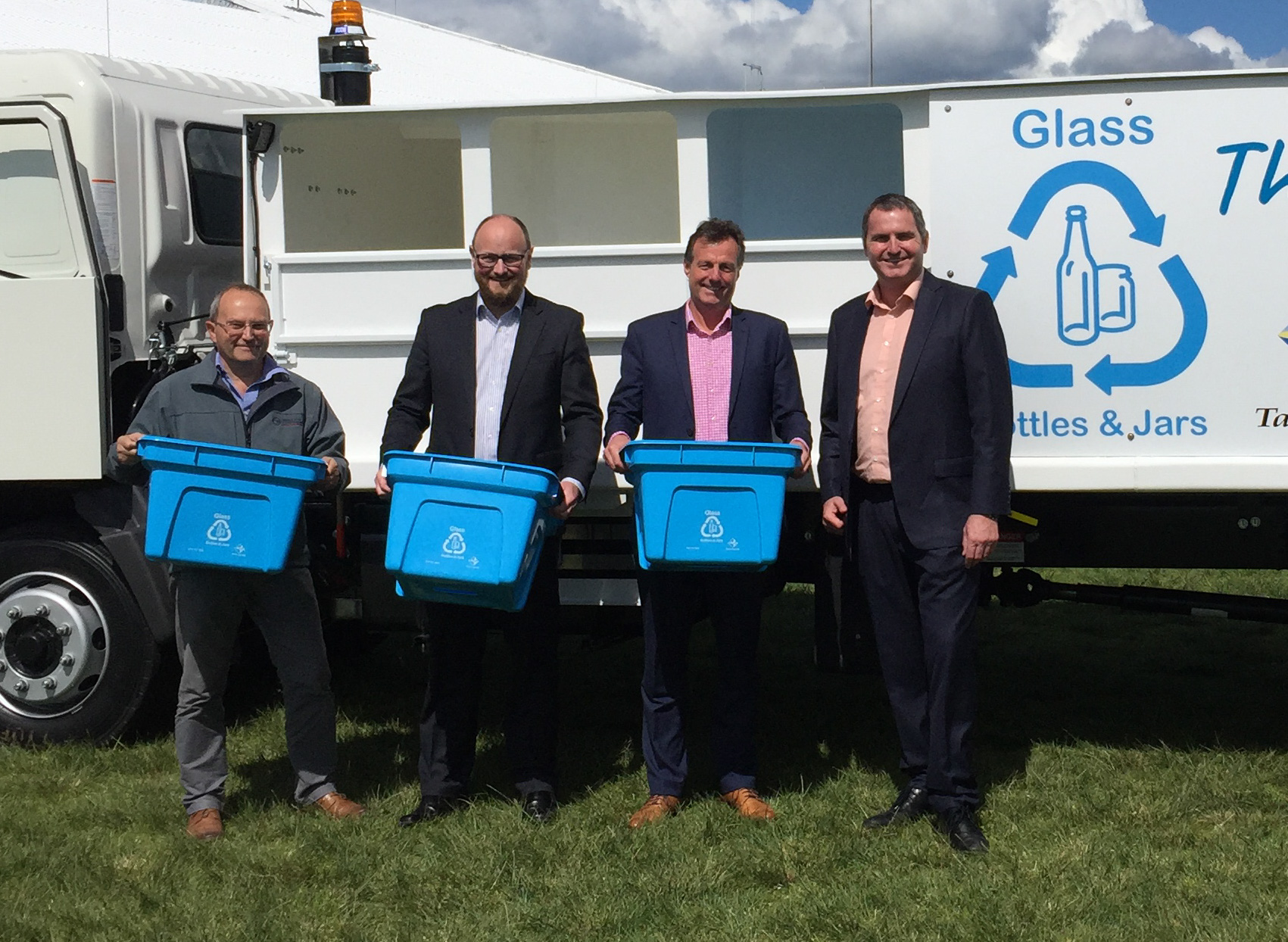
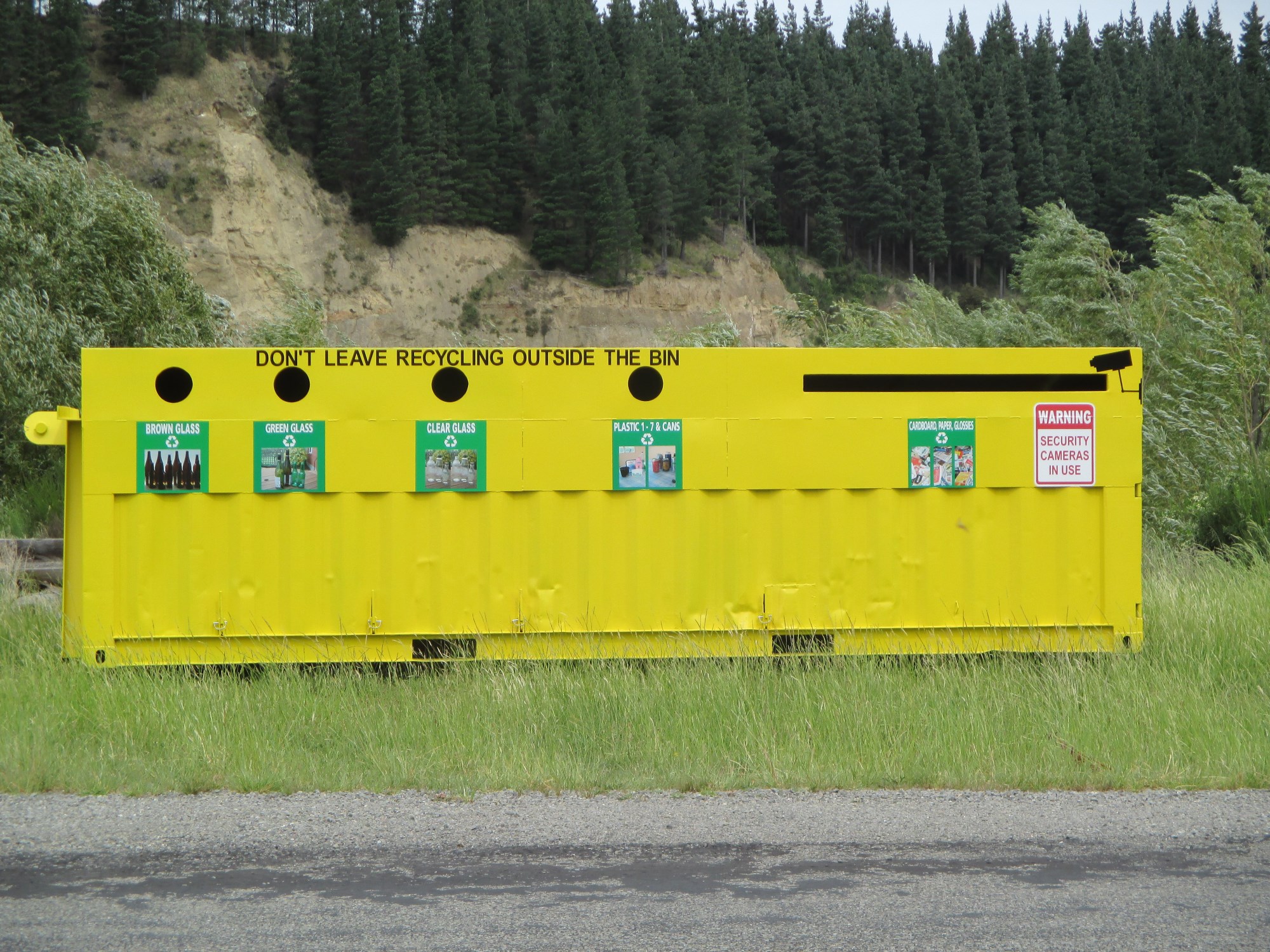
Marlborough District Council
What:
Recycling containers
Where:
Marlborough
Why:
The Marlborough District Council wanted to expand its Rural Community Recycling programme to include isolated areas of the Marlborough Sounds and Awatere Valley.
Impact:
Around 56 tonnes of recyclable material will be collected, of which glass makes up nearly 60%.
5R Solutions
What:
Breaker / Conveyor
Where:
5R Solutions – Christchurch hub
Why:
A more efficient method of crushing and loading 20foot containers was needed. This was a result of an increase in both glass to site and freight costs due to damage to SH1 from the Kaikoura earthquake.
Impact:
The machine allowed for colour-sorted glass to be broken and loaded into 20foot containers in one operation, which resulted in significant time savings. Also, by maximising the volume of glass going into the containers, substantial cost saving were achieved.

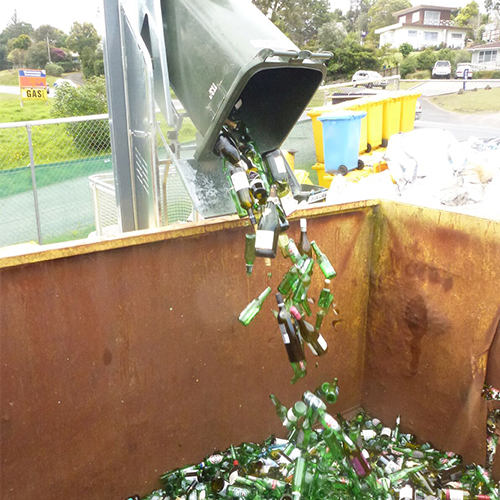
Community Recycling Centre
What:
Solar-powered wheelie bin lifter
Where:
Whangaparaoa Community Recycling Centre
Why:
The old glass handling system of emptying colour-sorted glass from wheelie bins into a hook bin was done by hand. This presented health and safety issues and meant the second hook bin needed to be placed outside the small site.
Impact:
The bin lifter greatly improved the efficiency of emptying glass into the hook bins. It also allows the second hook bin to sit within the site. This resulted in improved colour-sorted glass recovery.
Hastings District Council green bins
What:
Shipping containers repurposed into recycling drop off points
Where:
Seven sites around Hastings
Why:
Initially the desire was to give rural residents access to recycling drop off points but it was soon realised that the model could be applied to urban sites too.
Impact:
Improved recovery of recyclable materials, including colour-sorted glass.

Rotorua Lakes
What:
Bintainers
Where:
Rotomā and Rotoiti
Why:
The Rotorua Lakes Council wanted to install public place recycling to make it easier for holiday makers and residents in Rotomā and Rotoiti to recycle their glass.
Impact:
A $6,390 grant from the GPF helped the council install five bintainers to make glass recycling more accessible.
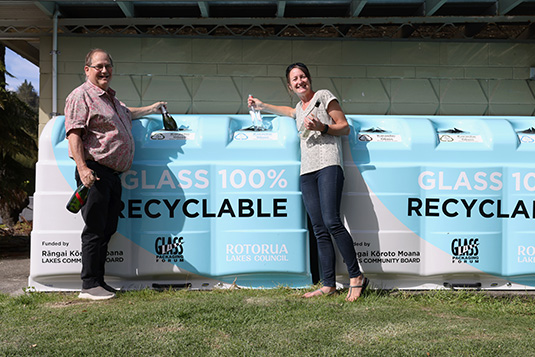
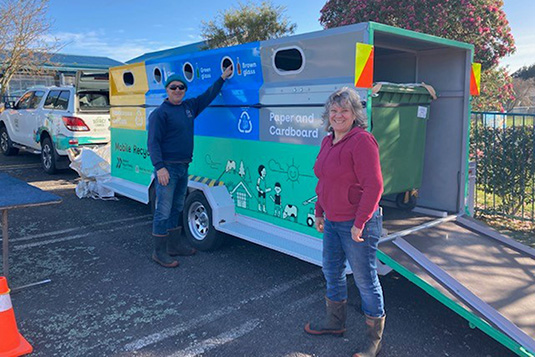
Western Bay of Plenty District Council
What:
Mobile recycling trailers
Where:
Rural Western Bay of Plenty
Why:
The Western Bay of Plenty District Council wanted to make recycling easier and more convenient for rural residents.
Impact:
A $12,000 grant from the GPF helped the council commission two mobile trailers for collecting recyclables from rural residents. They are expected to collect around 2.5 tonnes of glass a month as well as other recyclables like plastic, fibre and metal.
Central Otago District Council
What:
Glass recycling bins
Where:
Clyde
Why:
The increase in visitors over peak periods meant extra capacity was needed in Clyde’s public place recycling area.
Impact:
A $500 grant meant extra bins could be placed, which are serviced by Alexandra Wastebusters. The collected glass is colour-sorted and sent to Auckland to be recycled.
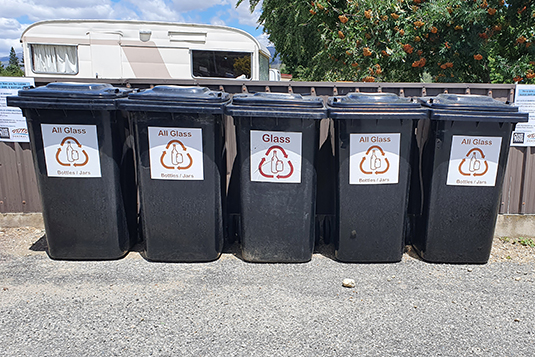

Kaupokonui and Districts Beach Society
What:
Glass recycling station
Where:
Kaupokonui Beach
Why:
The increasingly popular Kaupokonui Beach in Taranaki had no recycling facilities for residents and visitors, with the nearest facility 4km away.
Impact:
A $1,100 grant meant recycling station could be installed in time for summer.
Matamata-Piako District Council
What:
Recycling container and staff
Where:
Morrinsville, Matamata and Te Aroha.
Why:
The Matamata-Piako District Council had decided to not collect recyclables during the COVID-19 lockdown, but wanted to give residents the option of recycling glass at pop-up recycling sites.
Impact:
A $6,000 grant from the GPF helped fund a recycling bin and staff to manage social distancing at the temporary collection sites.
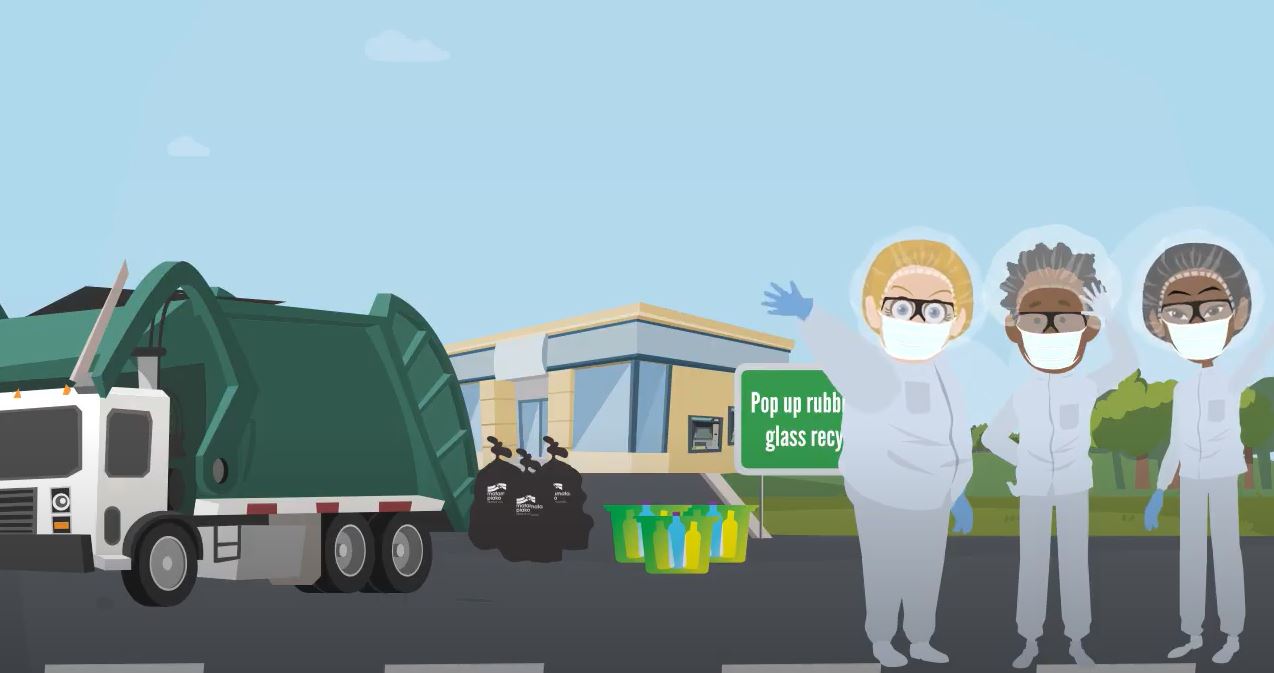
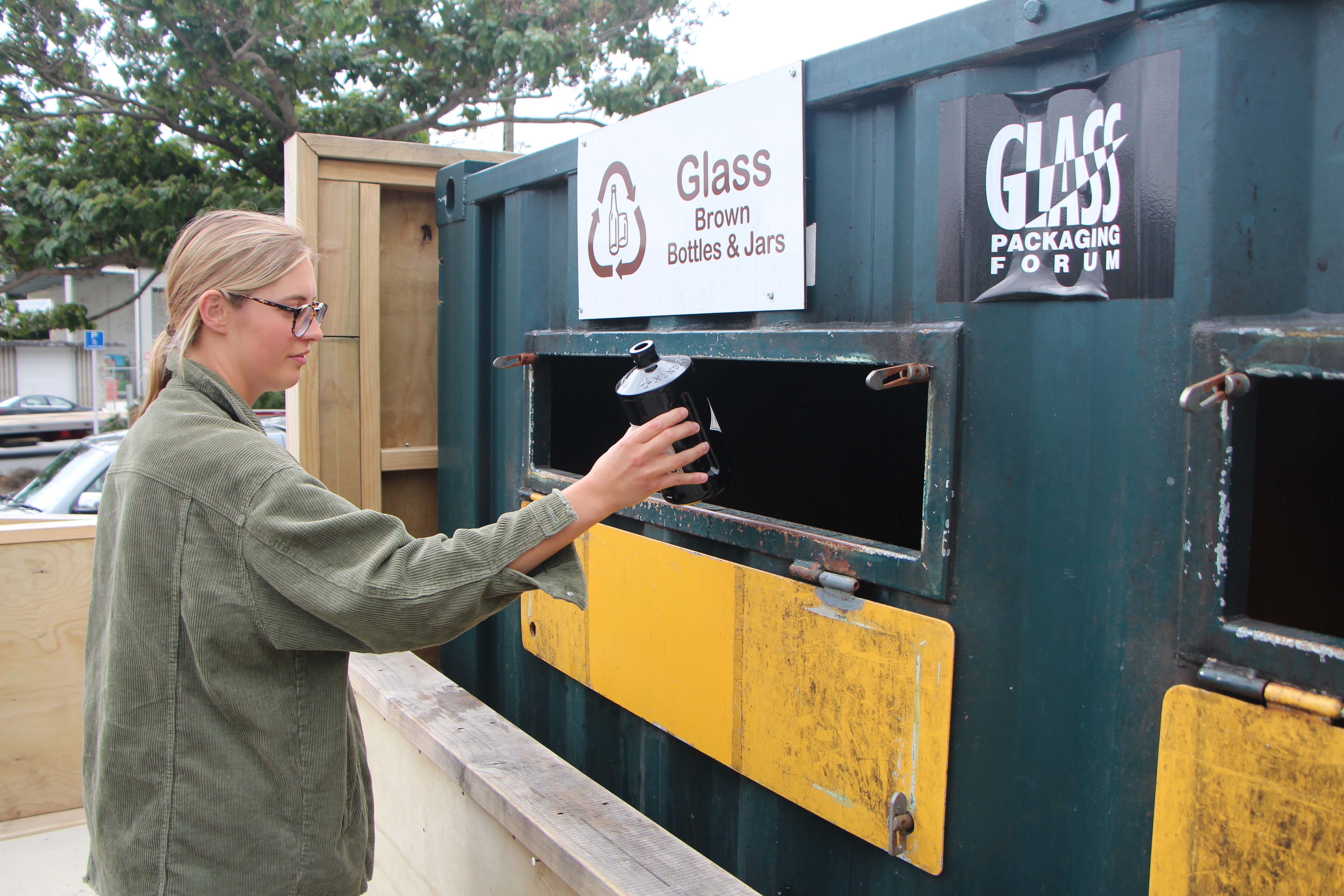
Upper Hutt City Council
What:
Recycling containers
Where:
Upper Hutt
Why:
The Upper Hutt City Council needed to upgrade its public recycling centre after demand exceeded capacity.
Impact:
A $10,000 grant from the GPF meant the centre could increase its capacity to receive glass bottles and jars, resulting in an increase in over 160% in the amount of glass being recycled.
Whanganui District Council
What:
Recycling containers
Where:
Whanganui
Why:
The Whanganui District Council wanted to run a trial of recycling containers at three of its 12 pensioner housing complexes. The city has no kerbside recycling collections and some residents are unable to access the resource recovery centre.
Impact:
The recycling containers will result in new glass going to the furnace in Auckland, as well as help trial whether the other nine pensioner housing complexes should also get containers.
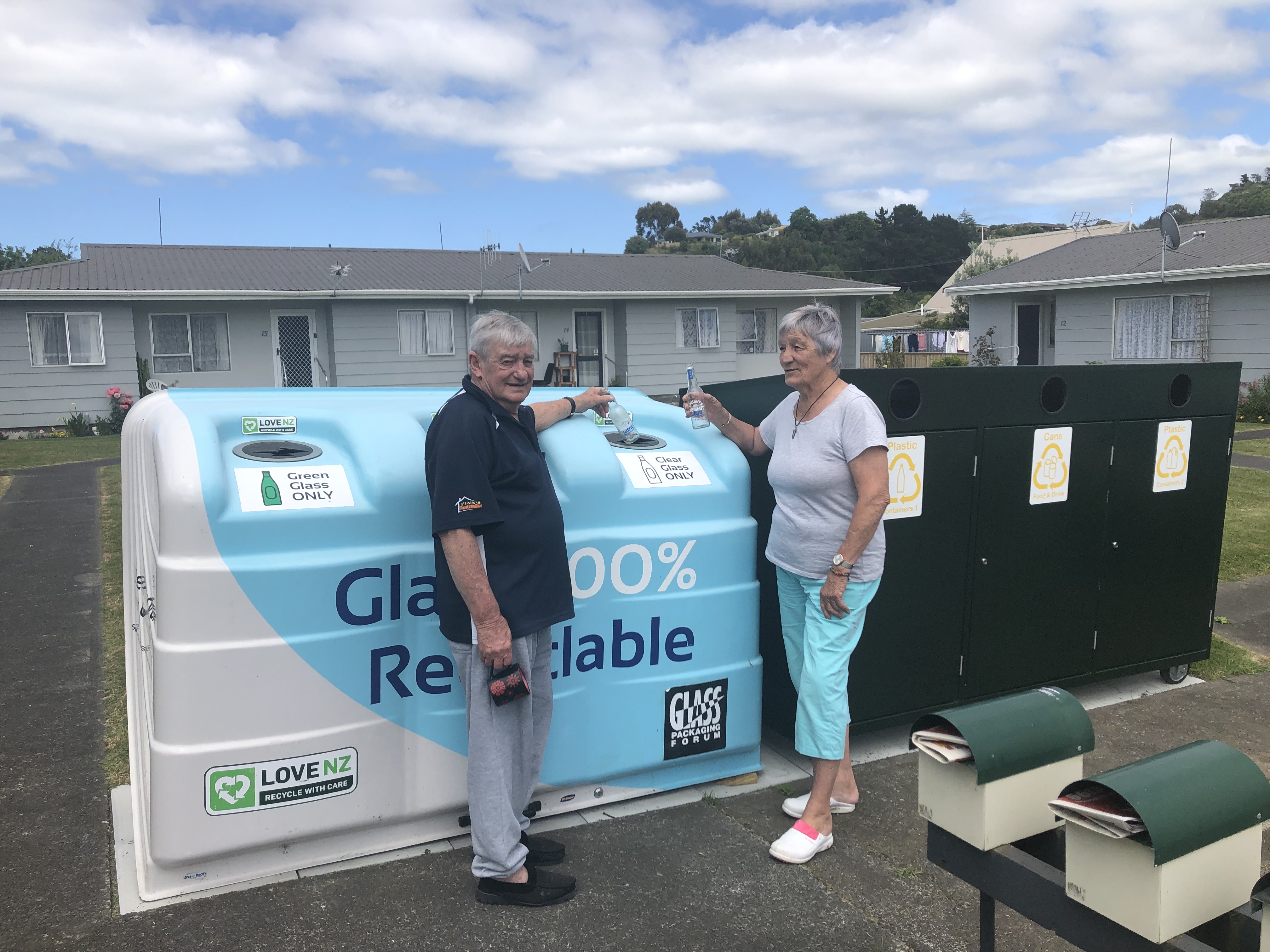
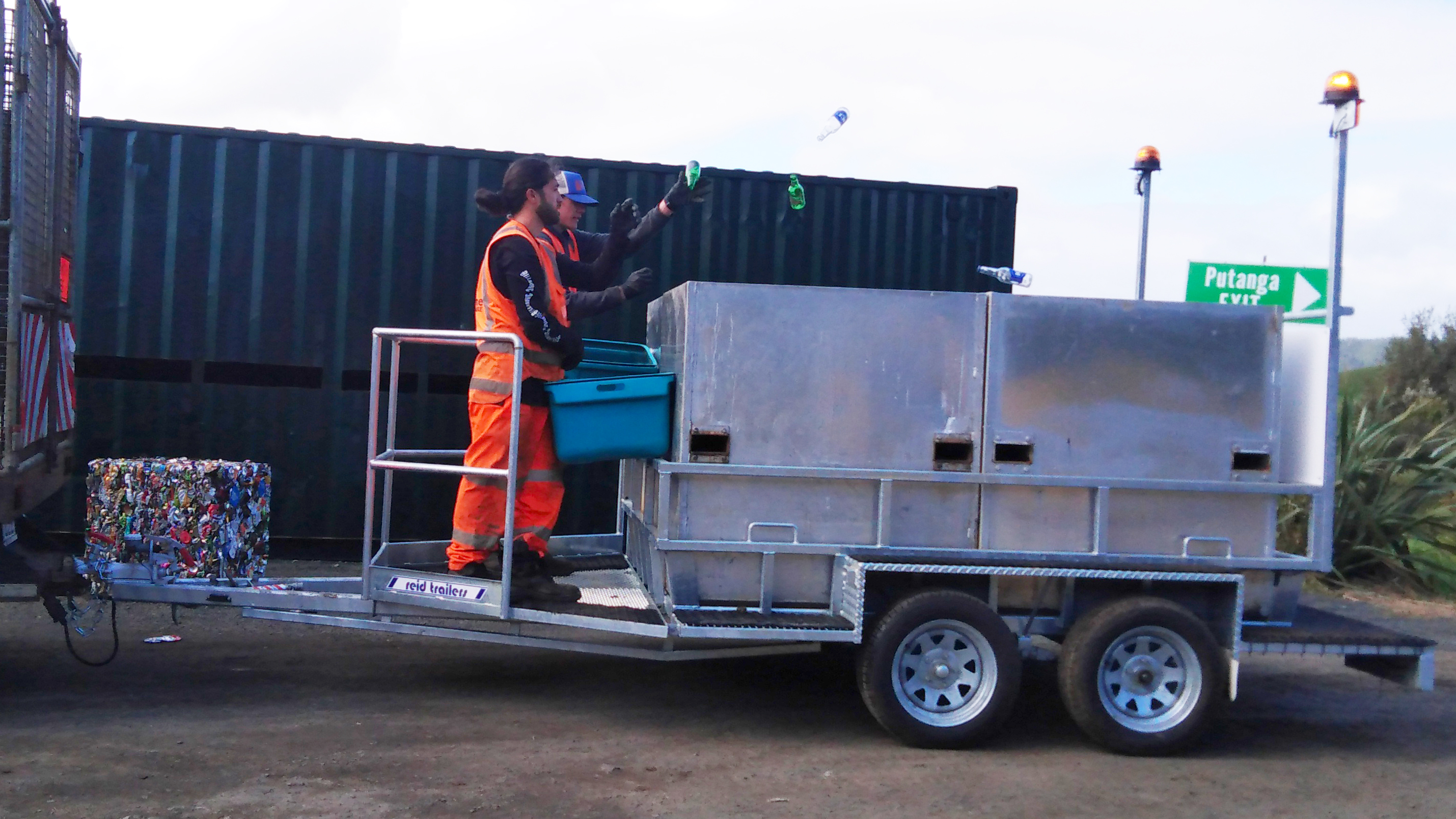
Xtreme Zero Waste
What:
Purpose-built trailer
Where:
Raglan
Why:
Xtreme Zero Waste are regularly contracted to events throughout Waikato as well as conducting kerbside recycling collections. They needed to increase their capacity for collecting recyclable material at events, such as festivals and sports tournaments.
Impact:
The new purpose-built trailer has doubled their ability to collect glass. It will also address health and safety risks caused by double handling.
Tararua District Council
What:
Glass collection bins
Where:
Tararua District
Why:
All glass bottles and jars collected in the Tararua District had been previously going to landfill as daily cover. The Tararua District Council identified glass as something for improvement within its waste management and minimisation plan and decided to undertake an overhaul of the glass collection system.
Impact:
Diversion of some 650 tonnes of colour-sorted glass from landfill to be recycled at O-I.
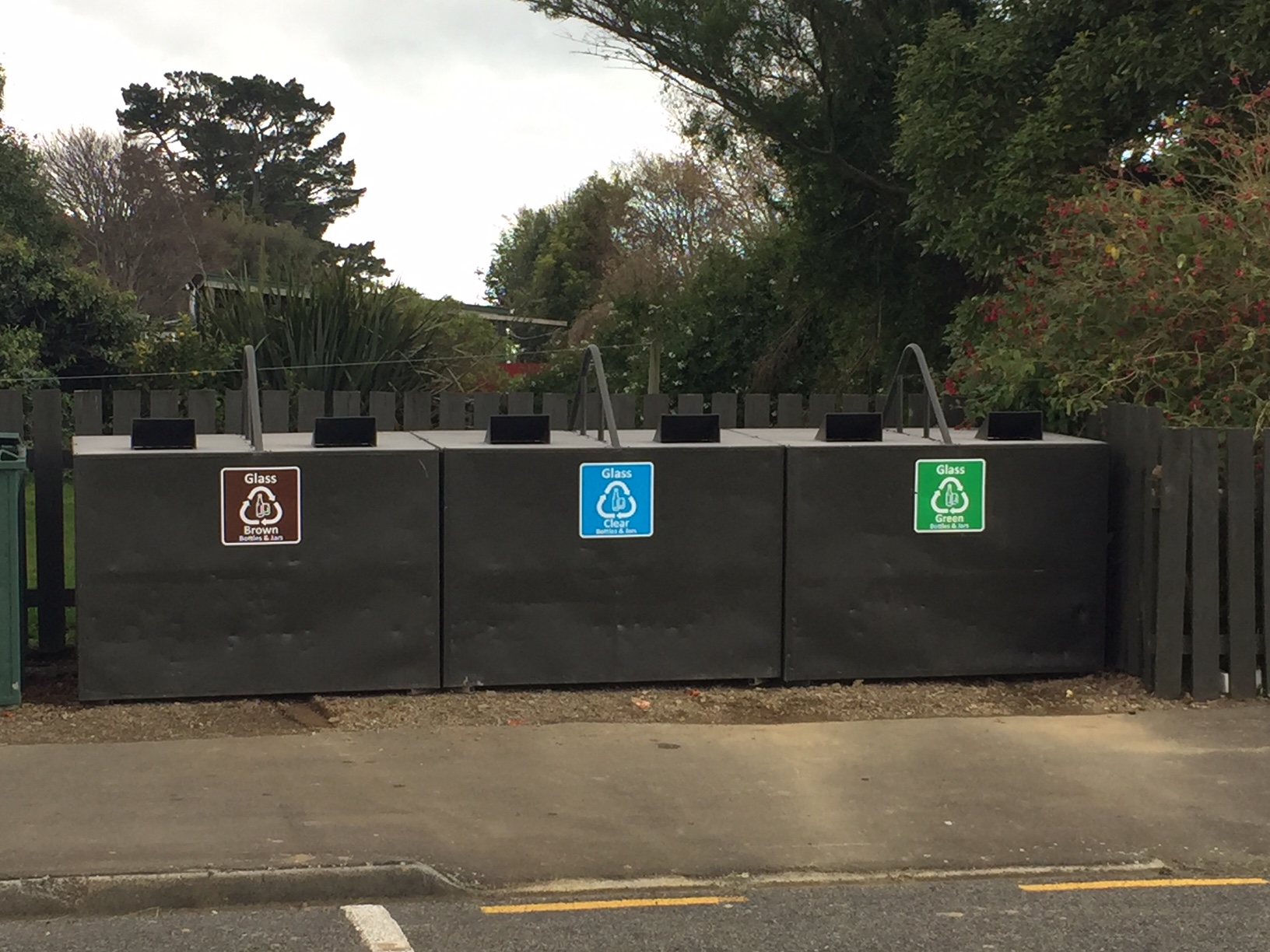
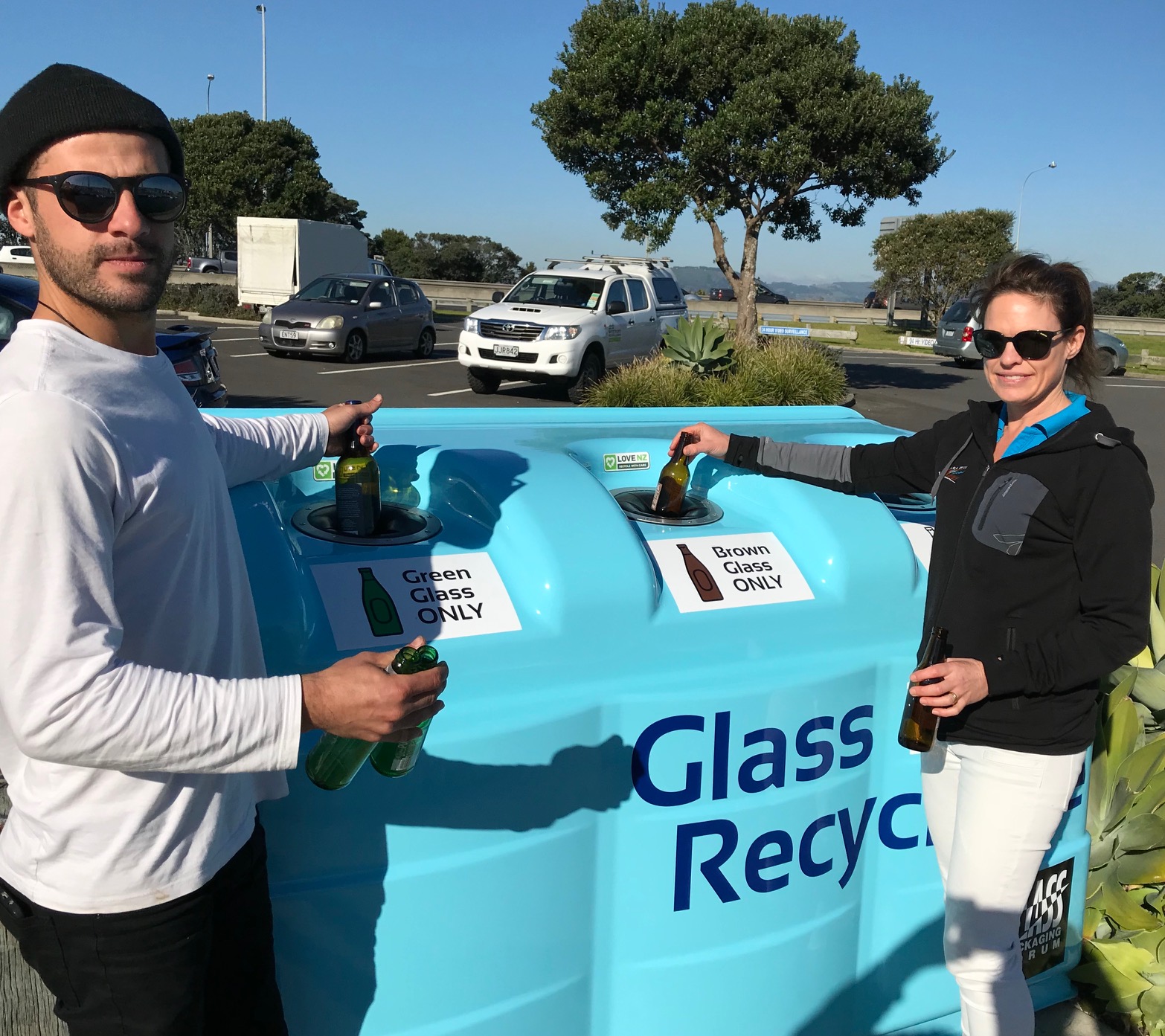
Tauranga Bridge Marina
What:
Glass recycling bins
Where:
Tauranga
Why:
As a sustainability-focused marina they were keen to improve their glass recycling. The marina also an active member of The Clean Marina programme and the bottle banks will allow them to meet the programme requirements.
Impact:
Diversion of over 100 tonnes of colour-sorted glass from landfill to be recycled at O-I.
Clean Events
What:
Glass collection wheelie bins
Where:
Auckland
Why:
Clean Events, an Auckland-based company works with the majority of Auckland’s major events. The eye-catching artwork makes the bins unique and provides a superb educational angle that draws event users to the recycling station.
Impact:
Clean Events anticipate the tonnage of glass from events they are contracted to will increase to over 50 tonnes per year.


Pak ‘n Save
What:
Glass bottlebank
Where:
Pak ‘n Save Queenstown
Why:
Aimed at giving the large number of tourists visiting the area access to a glass recycling facility, thus preventing glass going to landfill.
Impact:
Increased colour-sorted glass back to the furnace at O-I New Zealand.
Splore
What:
Boutique music festival
Where:
Auckland
Why:
Organisers wanted to train bar managers and staff to increase colour-separated glass “back of house”.
Impact:
The training increased the volume and quality of glass going back to the furnace at O-I New Zealand.

Queenstown Lakes District Council audit
What:
The Queenstown Lakes District Council wanted to conduct an audit to assess what level of contamination was present in its glass recycling streams to implement improvements.
Where:
Queenstown lakes
Why:
In order to improve glass recycling contamination the council needed to identify sources of contamination.
Impact:
The council gained a thorough understanding of contamination levels, which were just 0.35%, and what constituted this contamination. It also developed an innovative online reporting system which can be used for other projects.
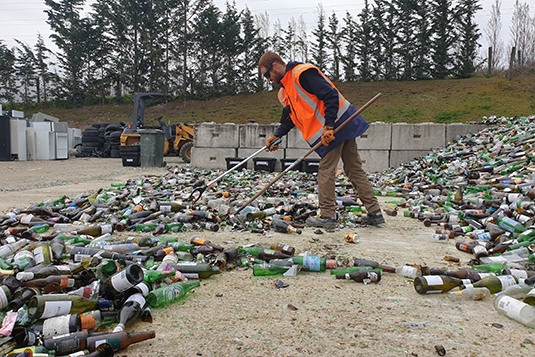
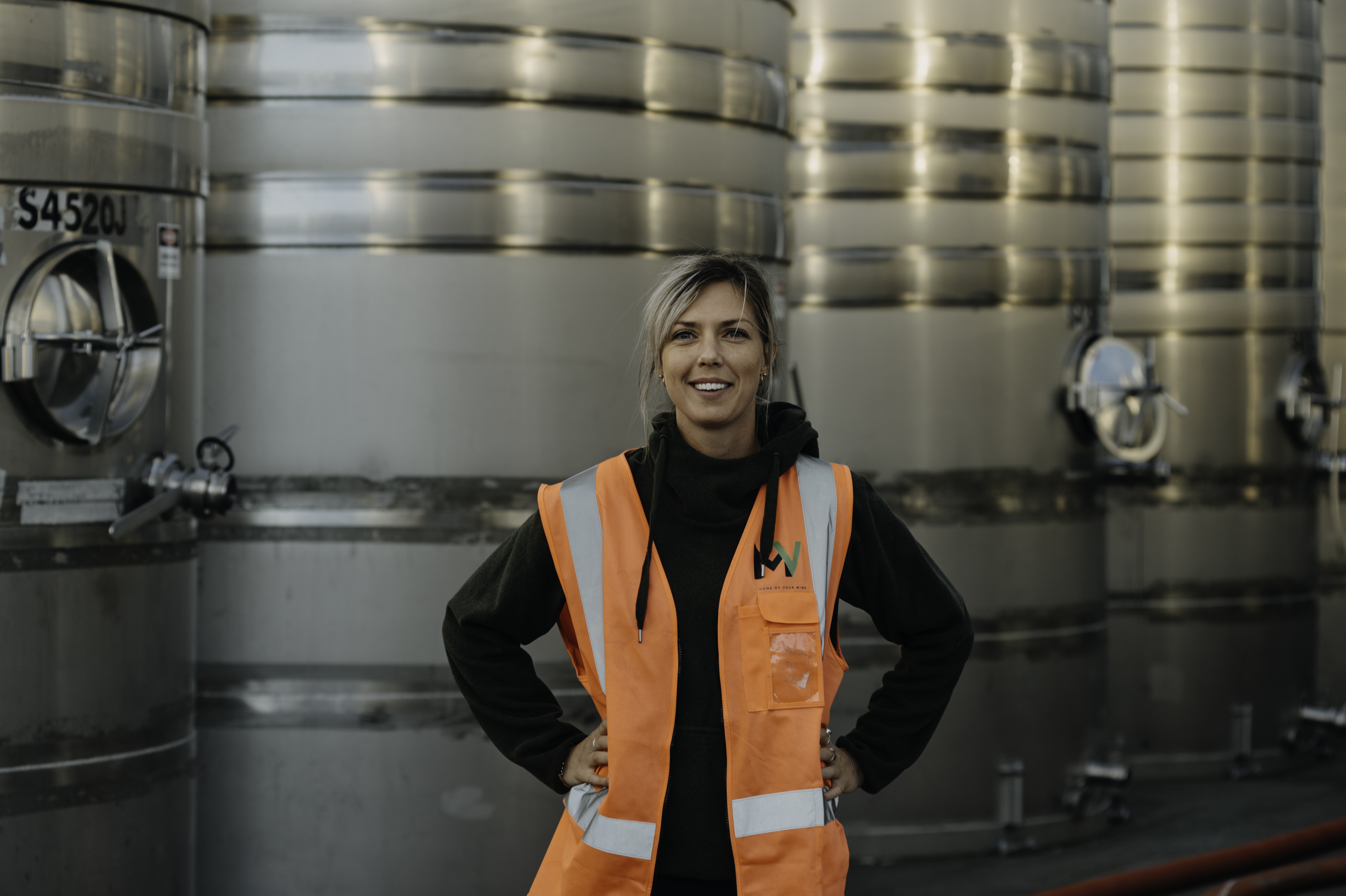
Viticulture industry glass use
What:
Wine maker Alice Rule conducting research into the value generated for the NZ wine industry by integrating glass into the circular economy.
Where:
Hawke’s Bay
Why:
Engaging with the food and beverage and hospitality industry is a key goal in order to encourage more recycling from this sector.
Impact:
Gain greater understanding of the part glass plays in the sustainability work of the viticulture industry, as well as encourage greater recycling rates.
Auckland University
What:
Research into recycled aggregates and waste (including glass) for road construction
Where:
Auckland University
Why:
To investigate the performance existing recycled concrete aggregates, and further consider possible blends of materials for use in road construction.
Impact:
Study ongoing, but possible impacts could be increased use of comingled glass cullet as aggregate for road construction, rather than going to landfill.
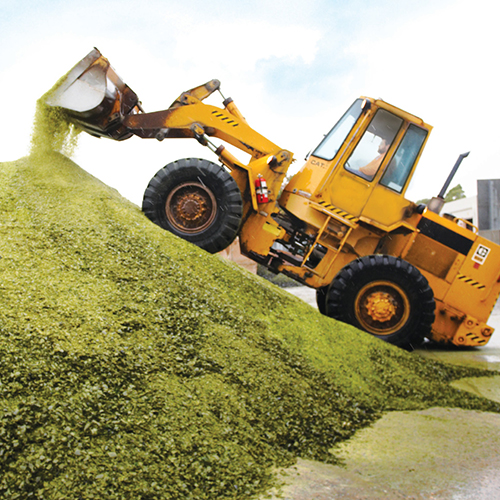
Apply For a Grant
